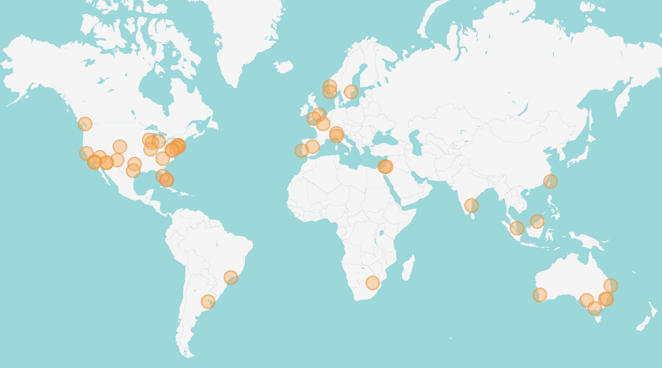
How do the brains of intelligent people work?
From NEUROSCIENCE, a Flipboard magazine by Glossex
People with a higher-than-average intelligence level have brains that are "wired" in a different way, researchers say. A new study suggests that…

From NEUROSCIENCE, a Flipboard magazine by Glossex
People with a higher-than-average intelligence level have brains that are "wired" in a different way, researchers say. A new study suggests that…
The U.S. defense agency that specializes in "out-there" science and technology endeavors is on a quest to bridge the gap between brain and…

From The Guardian, a Flipboard magazine by The Guardian
There are good reasons to be cautious about a new study claiming computer-based training can reduce the risk of…
From Brain, a Flipboard magazine by tommysclee
A recent study has been hailed as a "breakthrough" in dementia prevention, after finding that a brain-training exercise can…
Human beings have an internal clock that enables the subconscious perception and estimation of time periods. A research team under Dr. Roland Thomaschke of…
From THE SCIENCE OF My LIFE, a Flipboard magazine by duskdiver
A memory complaint, also called Subjective Cognitive Decline (SCD), is a subjective disorder that appears to be relatively common,…

From Brain Philosophy, a Flipboard magazine by Sandra Clark
Beyond teaching us more about the structure of the brain, these maps could help unlock some of the…
From Brain/Vision, a Flipboard magazine by CinemaoftheMind
Children with autism show different patterns of connectivity than controls do in brain stem regions associated with balance.…
From Brain/Vision, a Flipboard magazine by CinemaoftheMind
Children with autism show different patterns of connectivity than controls do in brain stem regions associated with balance.…




From Neuro, a Flipboard magazine by Jack
Several studies comparing adult musicians and nonmusicians have…
Proud and excited to announce the 12 groundbreaking startups that will get to pitch their idea and solutions at…



— Registrants for the 2017 SharpBrains Virtual Summit (December 5-7th) as of November 3rd, 2017
Just a quick update on how registration stands for the upcoming 2017 SharpBrains Virtual Summit: Brain Health & Enhancement in the Digital Age (December 5-7th).
We are proud to report that so far 130 experts, pioneers and practitioners are registered to participate.
95 seem to be based in the US and 35 abroad, based on IP address during registration, with the following country breakdown:
__________
Please consider joining us to explore the latest brain science and tech and market trends and to help shape Brain Health & Enhancement in the Digital Age.
For context, organizations represented in past Summits include: AARP, Alegent Health Immanuel Medical Center, Allstate Insurance, Alzheimer's Association, BBC, Bon Secours New York Health System, Brain Injury Association of America, Campbell Soup Company, Greenville Hospital System, Harvard Business Review, HealthComm Inc., Human Dimension Taskforce, US Army, Institute For The Future, Intel, Johnson & Johnson, Los Angeles County Dept of Public Health, McGovern Institute of Neurotechnology, MIT, National Resource Ctr. Osher Lifelong Learning Institutes, Nutrition Science Solutions, One Laptop Per Child, OptumHealth Behavioral Solutions, Piedmont Gardens, PsychologyToday, Procter & Gamble, Robert Wood Johnson Foundation, Stanford University, Sun Microsystems, UC Berkeley, UnitedHealth Group, Winter Park Health Foundation, Workers' Compensation Regulatory Authority, UCSF.
And the backgrounds of previous participants include: Biomedical Engineers, CEOs, Digital Media professionals, Entrepreneurs, Game publishers, Healthcare technologists, Marketing Executives, Medical Students, Neurologists, Neuropsychologists, Non profit board members, Occupational Therapists, Pharmaceutical Executives, Post doctorate researchers, Professors and Researchers, Psychiatrists, Psychologists, Psychotherapists, Scientific Publishers, Social Workers, Speech Pathologists, Talent management/HR, and Wellness professionals.
Looking forward to a great conference!
__________
Learn more & Reserve your Spot HERE
(10%-off promo code for SharpBrains readers: sharp2017)
Almost 10% of the world population suffers dyslexia. Establishing an early diagnosis would allow…